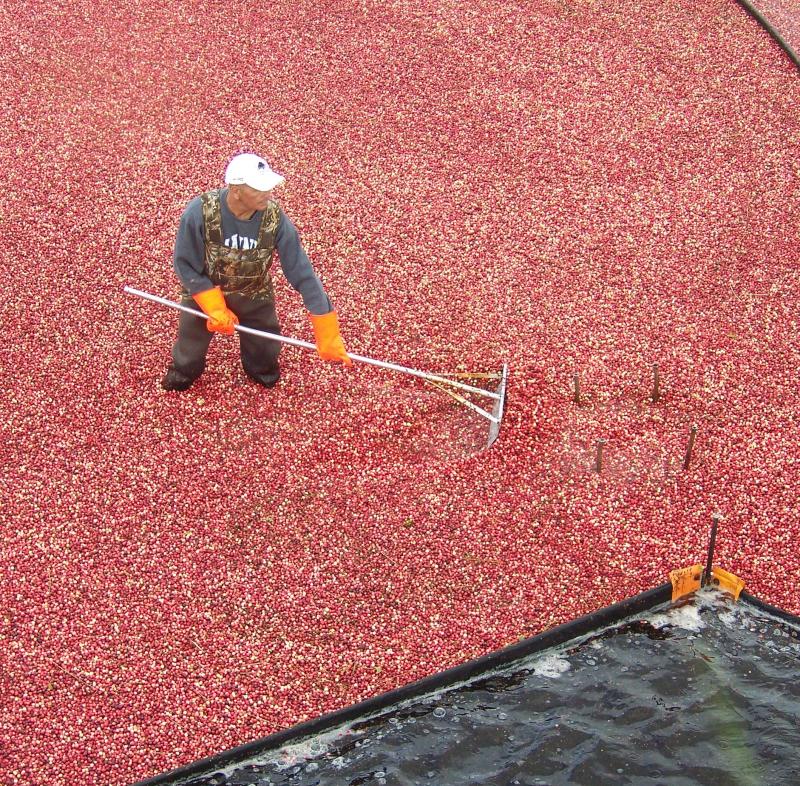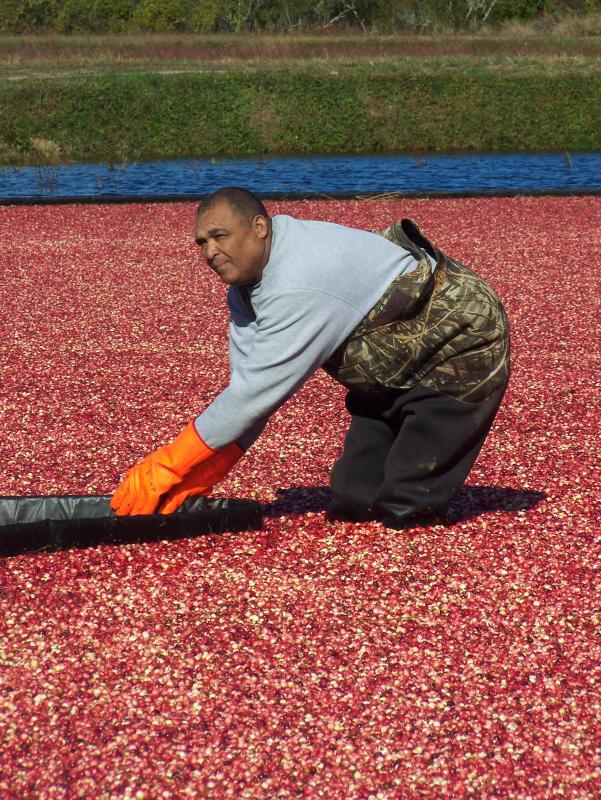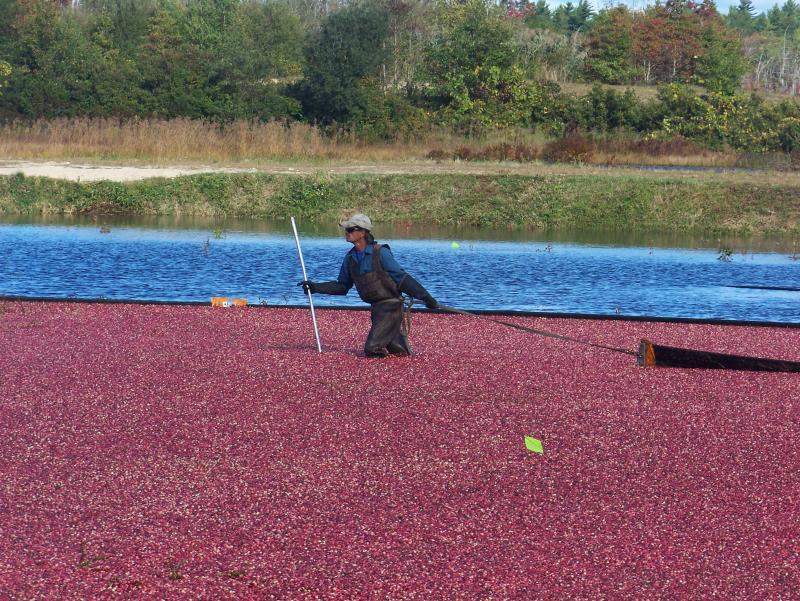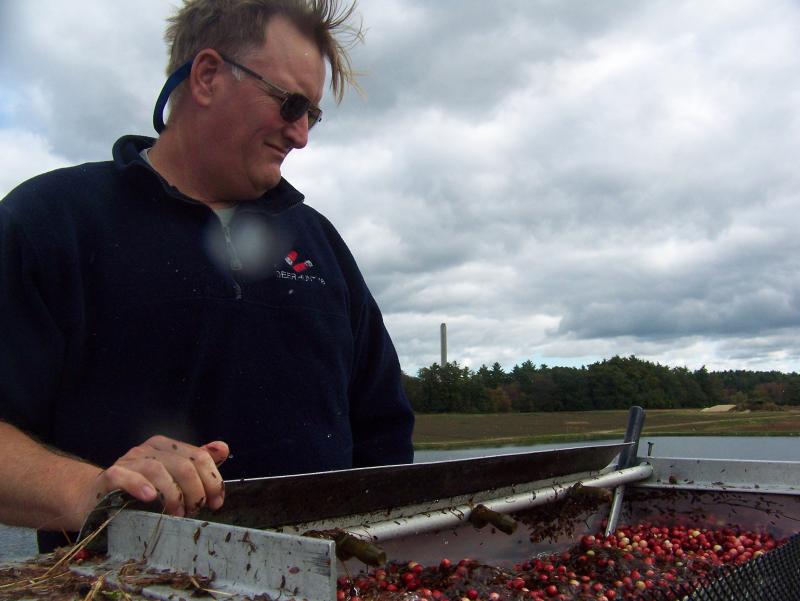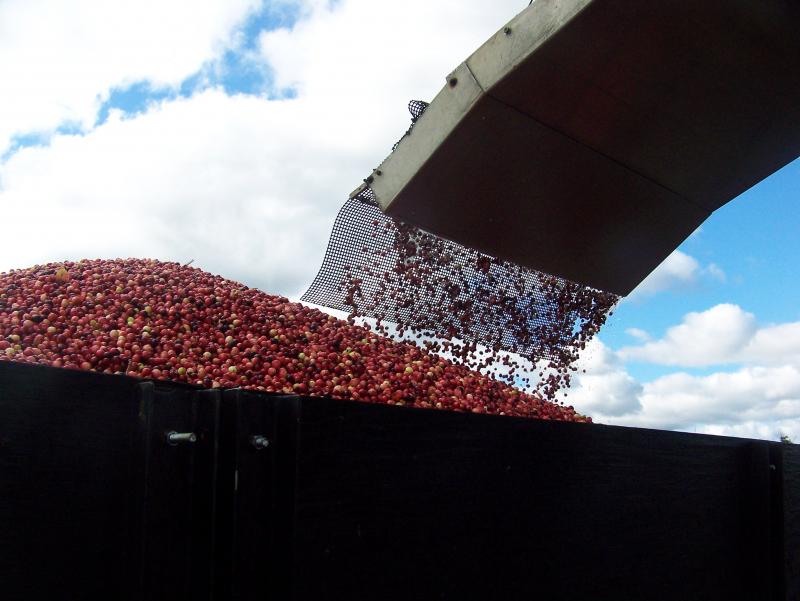Cranberry growers start harvesting
Small, tart, and colorful, cranberries are big business for growers across the region as the annual harvest starts.
Recently, Ocean Spray Cranberries, Inc. issued a 2013 crop projection that looks to be comparable to 2012 when the Massachusetts harvest totaled 2.12 million barrels, which was 8 percent less than in 2011 — a record-breaking year for the crop.
In Rochester, fifth-generation cranberry grower Brad Morse began pumping berries out of some of his bogs last week. Morse tends to 600 acres of land. He’s also served as president of the Cape Cod Grower’s Association since 2010.
Morse started harvesting his crop last week in a bid to get some berries sold.
With Ocean Spray projecting a good year, Morse, who is also a Selectman in Rochester, said he wanted to his produce on the market to net a good price.
Before cranberries wind up on your table the harvest is a straightforward, though wet, affair.
The vast majority of cranberry growers use a “water harvesting” technique. On an overcast morning, an experienced crew corralled the floating berries. Morse noted some of the crew has been doing this work since he was a child.
After a bog is flooded, a harvesting machine knocks the berries loose. A hollow fruit, the berries float as the water enters.
“With this method we are able to get just about every single berry from the bog into the truck,” Morse explained.
Three men stood in water just below their knees to tighten a floating boom around the circle of berries before they were pumped from the bog into a “water reel.”
The reel, which is rented, hauls the fruit up to be separated from leaves and other natural debris. Up there, spray nozzles rinse the crop initially. Leaves are pumped into a waste truck and the cranberries fill a truck that hauls them to Carver for further processing.
There, the fruit is prepared for juices, jellies, and other products. Each truck holds about 500 barrels of berries, Morse said. And if you’ve ever driven by a bog wondering what a fresh cranberry tastes like, the answer in a word: Tart.
“That’s why we add sugar,” Morse said. According to Ocean Spray, historically 80 percent of a season’s crop is consumed in North America, with the remaining amount being shipped overseas. In North America, 20 percent of harvested berries are eaten during Thanksgiving week.
The challenge for Ocean Spray is two-fold; the cooperative wants to expand global demand for cranberries and promote it as a healthful snack year-round. “As a cooperative, our mission is to market the fruit of our grower-owners.
To do that, Ocean Spray is focused on increasing demand for our great-tasting, good-for-you cranberry products through bold market expansion, development of new distribution channels,” said Randy Papadellis, president and chief executive officer of Ocean Spray.
Massachusetts is the second largest cranberry producing state in the nation, second only to Wisconsin, and produces about 25 percent of the national output. Ocean Spray, a grower-owned cooperative based in Lakeville and Middleboro, estimated this year’s global crop would range between 11.1 and 11.5 million barrels of cranberries.
